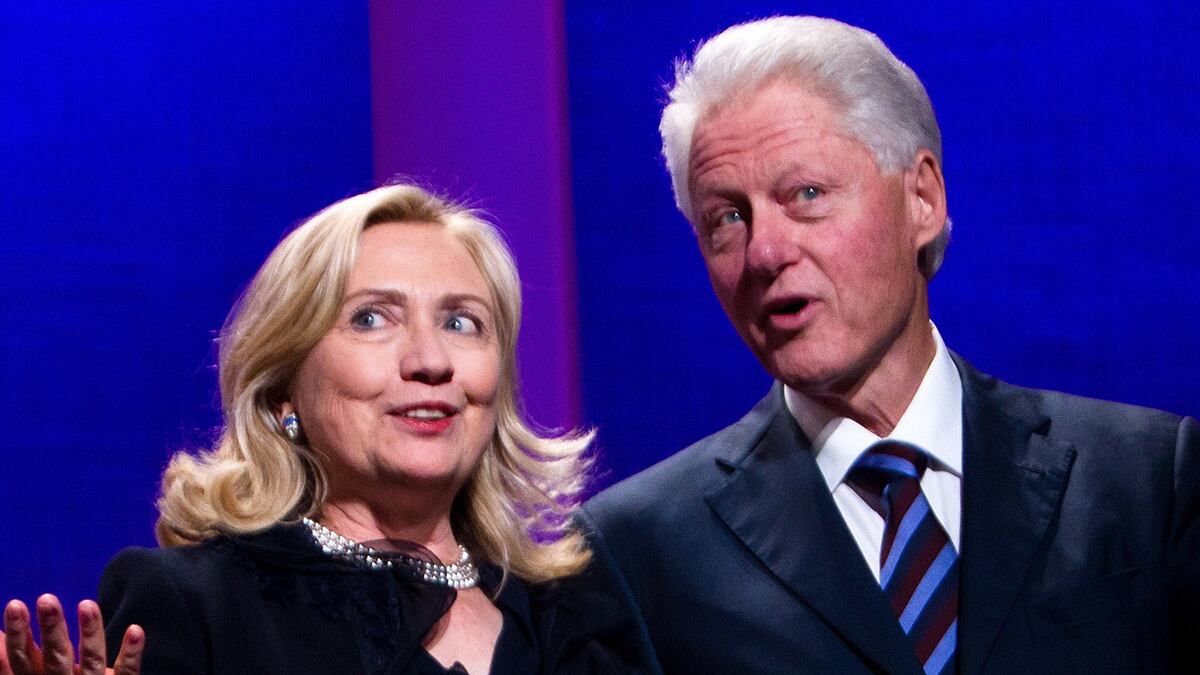The announcement by Sen. Ben Nelson (D-Neb.) that he is retiring provides some clear indication of the challenges that lie ahead for the Democrats in 2012, and what the message implications are for the 2012 campaign.
Nelson is now the seventh Democrat in the Senate to announce that he will not seek reelection in 2012—placing Democratic control of the Senate in serious doubt.
With control of the Senate and perhaps even the House now in play, the critical question going forward in the 2012 campaign season is how the Democratic Party should position itself to maximize its appeal among voters.
Put another way, which approach—a populist approach or a centrist approach—will produce the broadest appeal and most support in swing states and swing districts?
Some new poll data collected in December about the respective appeals of former President Bill Clinton, Secretary of State Hillary Clinton, and President Obama give some clear indication of what the potential for the Democrats are in 2012, and what their message should be.

There is solid statistical evidence that a centrist, bipartisan approach to governing and leading is far more popular than narrower, class-based politics.
A recent national survey I conducted with 800 registered voters tested the appeals of the Clintons and Obama in trial heats against Mitt Romney, the strongest potential Republican nominee. The purpose of this analysis was not simply to pit the Clintons—both of whom have said they support the president—against Obama. Rather it is a serious effort to understand the appeals of the three leading Democrats in America, and how voters respond to them.
The results of the survey—which show that both Bill and Hillary Clinton have wider appeal than Obama—make it very clear that the American people favor a broader, more inclusive approach in politics.
In a two-way race for president between Bill Clinton and Mitt Romney, an overwhelming majority prefers Clinton, 60 percent to 24 percent. Although Hillary Clinton did not fare quite as well as her husband, a clear majority (52 percent) says it would vote for her over Romney, with only one third saying they would vote for the former governor. The Clintons, both individually and collectively, are able to garner at least a majority, if not three fifths, of the vote in the wake of a crippling economic downturn and stagnant economic growth.
Meanwhile, given a choice between the incumbent president and Romney, voters are split evenly, with each candidate getting 43 percent.
A detailed examination of the poll results shows the breadth and depth of the appeal of both Clintons:
While not surprisingly, Democrats and liberals say they would vote for Bill Clinton by 83 to 5 percent and 95 to 2 percent respectively, independents prefer him by 58 to 25 percent, and almost one third of Republicans (31 percent) support him. About two thirds of moderates (66 percent) and almost one third of conservatives (32 percent) say they would vote for the former president as well. And more than three quarters of both blacks and Hispanics prefer the former president, while 57 percent of whites do.
Hillary Clinton’s support is not as broad as her husband’s, but it is still quite strong. Moderates support her over Romney by 57 to 26 percent, and independents by 48 to 34 percent. Solid majorities of Hispanics and blacks say they would vote for Hillary, and a near majority of whites (49 percent) agree.
An examination of the demographic breakdown of the Obama-Romney horse race indicates that the president’s support is much weaker overall and quite limited. He wins only a narrow plurality with moderates, 46 to 41 percent, but loses with independents by 34 to 49 percent, and loses the white vote by 35 to 50 percent.
The significance of these findings should not be underestimated.
The enormous amount of support for Bill Clinton—six in 10 Americans are for him—is not just retrospective admiration; it is prospective respect for, and anticipation of, what his approach for politics would be in America.
The former president, while supporting the current president, has been much more outspoken in the past about the limits of government, the need for partnerships between government and the private sector, and passage by Congress of the Bowles-Simpson plan to reduce the debt and deficit. He has made it clear that this is not the time to raise taxes, and he has been a longtime advocate of fiscal restraint and the need to reduce the size and scope of government. He has consistently eschewed populism and excessive partisanship, and has been an advocate for cooperation and bipartisanship.
Although Hillary Clinton has not been as explicit recently in advocating positions on domestic politics—if only because she is serving in the Obama administration—she clearly is still more a centrist than Obama, and this is evident in her own level of support. As a member of the Obama administration, she clearly is perceived in a more partisan light than her husband. But she polls well above the Obama administration personally and politically, and her approval rating, in a recent Gallup poll, of 67 percent shows that she is the most popular member of the administration by far.
The current president’s weakness is a reflection of his commitment to populism and class-based politics, as recently articulated in his Kansas speech.
A detailed analysis of the survey data indicates that politicians who in the past advocated, and currently advocate, bipartisanship and coalition-building can build more coalitions, even in a divided and polarized country. The substantial degree of support for Hillary and Bill Clinton versus Mitt Romney shows that the more bipartisan, centrist, and fiscally conservative the appeal, the broader the level of support.
New York Gov. Andrew Cuomo underscores my point. He is the most popular Democratic governor in America, and his accomplishments have driven his approval rating to a record-high 68 percent. He has passed fiscally conservative measures: state spending grew by less than 2 percent this year, he made real cuts in health care and education spending, and he has reined in pensions. Cuomo did reduce taxes for the middle class while increasing them on the rich, but he had bipartisan support for the initiative, and the actual level of taxation the rich will pay is below what they are paying now. Cuomo is governing similarly to the way Bill Clinton did in the 1990s, when Cuomo served in his administration and the president reached a balanced budget agreement with the Republicans. This ultimately produced approval ratings for Clinton at or above the 62 percent level he currently enjoys.
One final point. Some may say that a former president of course will do well retrospectively. But the most recent former president, George W. Bush, lost a match-up with the current president by 40 percent to 31 percent. And in reviewing recent history, it would be highly unlikely that George H.W. Bush, Jimmy Carter, or Richard Nixon would have polled as well as Bill Clinton has. Even Ronald Reagan had well below a 60 percent approval rating in the four years after he left office.
The American people, despite the divisions and polarizations that exist, are looking for leaders who can bring the country together and govern in a fiscally prudent way. It is unlikely that President Obama will pursue this approach, and it is clear that his decision necessarily limits his ability to build the kind of broad, national consensus that he built in the 2008 election.
With Democrats controlling 23 of the 33 seats up for election next year, their party’s ability to maintain control of the Senate may very well hinge on whether it can hold states like Florida, Missouri, Montana, and Pennsylvania.
The only way it can do this is if Democratic incumbents like Claire McCaskill (Missouri), Jon Tester (Montana), Bill Nelson (Florida), and Bob Casey Jr. (Pennsylvania) run centrist, fiscally conservative campaigns that will garner the broadest appeal and most support in swing states and swing districts.
These incumbents will benefit from efforts by the Democratic National Committee and the White House to avoid the kind of rhetoric and policies that will only divide and limit their appeal.






